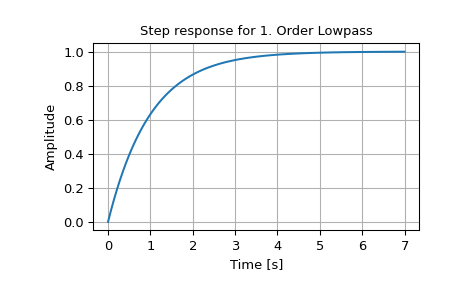scipy.signal.step#
- scipy.signal.step(system, X0=None, T=None, N=None)[source]#
Step response of continuous-time system.
- Parameters:
- systeman instance of the LTI class or a tuple of array_like
describing the system. The following gives the number of elements in the tuple and the interpretation:
1 (instance of
lti)2 (num, den)
3 (zeros, poles, gain)
4 (A, B, C, D)
- X0array_like, optional
Initial state-vector (default is zero).
- Tarray_like, optional
Time points (computed if not given).
- Nint, optional
Number of time points to compute if T is not given.
- Returns:
- T1D ndarray
Output time points.
- yout1D ndarray
Step response of system.
Notes
If (num, den) is passed in for
system, coefficients for both the numerator and denominator should be specified in descending exponent order (e.g.s^2 + 3s + 5would be represented as[1, 3, 5]).Examples
>>> from scipy import signal >>> import matplotlib.pyplot as plt >>> lti = signal.lti([1.0], [1.0, 1.0]) >>> t, y = signal.step(lti) >>> plt.plot(t, y) >>> plt.xlabel('Time [s]') >>> plt.ylabel('Amplitude') >>> plt.title('Step response for 1. Order Lowpass') >>> plt.grid()
